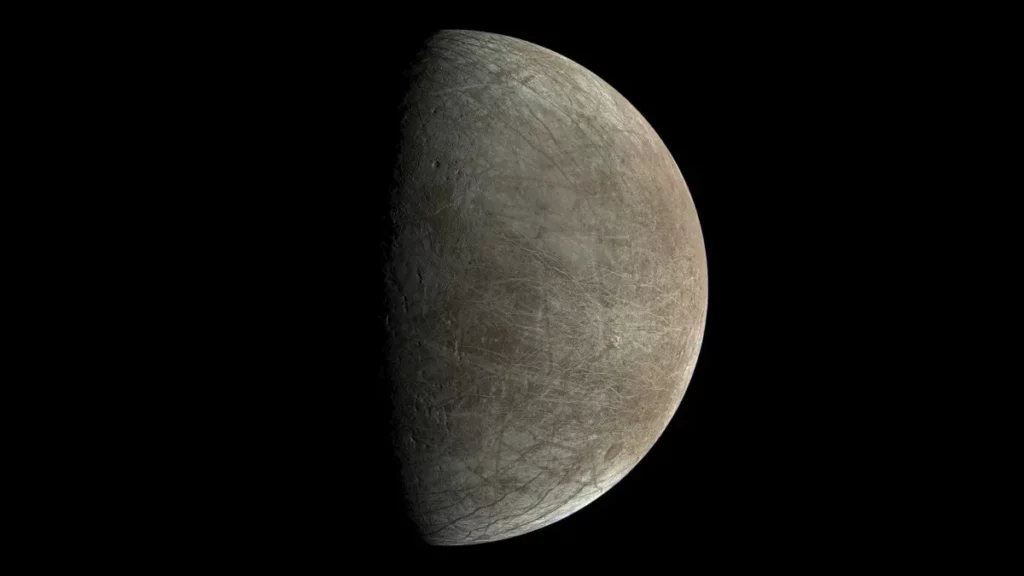Europa’s Oxygen Output Alters Life Odds
NASA’s Juno mission has provided new insights into the potential for life on Jupiter’s moon Europa, revealing oxygen production levels significantly lower than previously estimated. This discovery, derived from Juno’s orbit around Jupiter, suggests that Europa generates about 26 lb/s (12 kg/s) of oxygen, nearly 100 times less than earlier calculations. This finding plays a crucial role in assessing the moon’s habitability, particularly in its subterranean ocean.
Exploring Life’s Possibilities on Europa
Europa has long fascinated scientists with its potential for hosting life, primarily due to its global ocean hidden beneath a thick ice crust. The presence of water, alongside necessary life-supporting elements such as carbon, hydrogen, and oxygen, makes Europa a prime candidate for astrobiological studies. However, the revised oxygen production rates raise questions about the energy availability for any potential life forms in Europa’s ocean.
The Impact of Jupiter’s Magnetism
The Juno spacecraft’s findings underscore the dynamic interaction between Europa and Jupiter’s magnetic field. Charged particles from Jupiter bombard Europa, gradually depleting its water by splitting water molecules into hydrogen and oxygen. This process, while contributing to Europa’s oxygen generation, occurs at a much lower rate than previously believed, affecting estimates of the moon’s ability to support life.
Future Implications for Astrobiology
While the new data from Juno may adjust the probability of finding life on Europa, it doesn’t entirely rule out the possibility. The search for extraterrestrial life continues to focus on identifying environments within our solar system where water and essential life-building elements coexist. Europa, despite its lower-than-expected oxygen output, remains an intriguing subject for future exploration and study.






